The Himalayas is the highest mountain range in the world and 9 out of 10 of the world’s
highest peaks, including Mount Everest. Himalayas are very scare for Buddhists because it is
the birthplace of the Buddha. Shrines of saints and temples are the tourist attractions for
Muslim and Hindu tourists.
Many adventurers want to see the beautiful scenery of Himalayas but only getting there is so
expensive that very few stick to their plan. There is no concept of getting there through a
cheap flights and the option of heli-skiing is very expensive and everybody cannot afford it.

Trekking In The Himalayas is a bit difficult but the result which you get at the the end
totally worth those difficulties. The scenery is so breathtakingly spectacular that one forgets
all the hindrances. Still, before going to this exhilarating as well as arduous journey one
should keep certain things in mind and these tips will make his/her trip more enjoyable and
less tiresome.
Mt Everest was first climbed in 1953, back then it must be near to impossible as there were no
luxury lodgings, trekking bags, shoes, stick, sleeping bag etc. These things have made
trekking a bit easier. So, firstly one should have these advanced tools required for trekking.
Some people take it as a challenge and do not take these things with them and as a result,
during and by the end of the trek, they become so tired that they are unable to fully enjoy the
beauty of the trek. Not only this, they also put their lives in danger because this trek is not
everybody’s cup of tea and a smallest mistake can take one’s life. So, one needs to be fully
prepared for every kind of circumstances and come fully equipped.

Before even thinking about Himalaya Treks, one should ponder whether his/her health allows to do
so. Altitude sickness is a major risk especially for lung patients. As the altitude increases with
height, the level of oxygen reduces an this may cause a serious problem for asthma patients.
That’s why Every one should examine every aspect before setting on this journey.
One of the most important things which should be looked upon is the weather conditions of
the Himalayas. The average summer temperature in the Middle Himalayan Valley is around
25 degrees Celsius and the winters get extremely cold (below freezing point). Higher up in
this region, the winters are even colder and in the summer, temperature only reach 14-18
degrees Celsius.
Staying warm and dry is paramount; during winter, weather conditions are extremely
unpredictable and monsoons are also the same. From April to mid-June, is arguably ideal
time to climb Himalayas. During this period, the peaks of the mountain range are often
visible and clear.
Dehydration is also a very common problem which trekkers face during trekking. So, one
needs to take care of his/her water-intake because this minor negligence may cause serious
repercussions.
Himalayan Peoples, Culture and Religious

This is not only the scenery which attracts many trekkers and tourists towards the Himalayas,
it is the diversity. Himalayan range is the mixture of three religions: Buddhism, Hinduism
and Islam. Muslims who visit these ranges do not only go to shrines of their saints, they also
visit Hindu and Buddhist temples and vice versa. This promotes brotherhood and tolerance
towards other religion.
Diversity of religions result in the diversity of cultures. People live in the form of tribes and
every tribe has it’s own culture and those who visit them should enjoy their rituals and their
food and not only this, should respect that culture too. This trip should not be only about
trekking but also about exploring different cultures because no other place in this world is so
exotic and has so much to explore. As a result, when these visitors come back home they will
not have adventures to share but lots of stories about the locals.
Solo and Group Trekking

Both trekking with a group or trekking alone have their own pros and cons. For instance, the
advantage of trekking with a group is that you have company who will look after you if you
get yourself in trouble and the disadvantage is that you have to maintain your pace with
respect to your fellows climbers and this may slow you down. The advantage of trekking
alone is that you are not dependent on anybody and can climb at your own pace. The
disadvantage is that you are on your own, if you get injured nobody will be there to look after
you.
In conclusion, we may say that it is not an easy journey to take so one must go fully prepared
because a minor negligence can bring a major catastrophe.
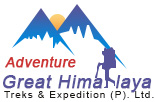

 Saturday, August 30th, 2025
Saturday, August 30th, 2025
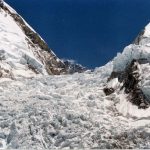 Wednesday, August 27th, 2025
Wednesday, August 27th, 2025
 Wednesday, August 20th, 2025
Wednesday, August 20th, 2025
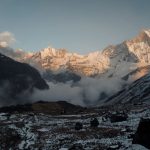 Wednesday, August 20th, 2025
Wednesday, August 20th, 2025
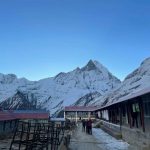 Wednesday, August 13th, 2025
Wednesday, August 13th, 2025
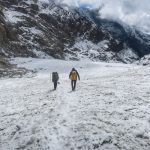 Wednesday, August 6th, 2025
Wednesday, August 6th, 2025
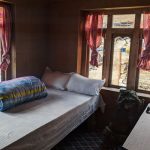 Monday, July 7th, 2025
Monday, July 7th, 2025
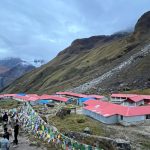 Thursday, July 17th, 2025
Thursday, July 17th, 2025
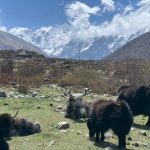 Monday, July 7th, 2025
Monday, July 7th, 2025
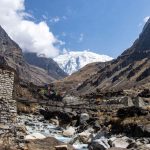 Friday, May 9th, 2025
Friday, May 9th, 2025
 Saturday, June 14th, 2025
Saturday, June 14th, 2025
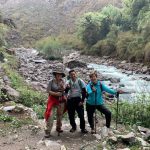 Wednesday, June 25th, 2025
Wednesday, June 25th, 2025
 Tuesday, August 5th, 2025
Tuesday, August 5th, 2025
